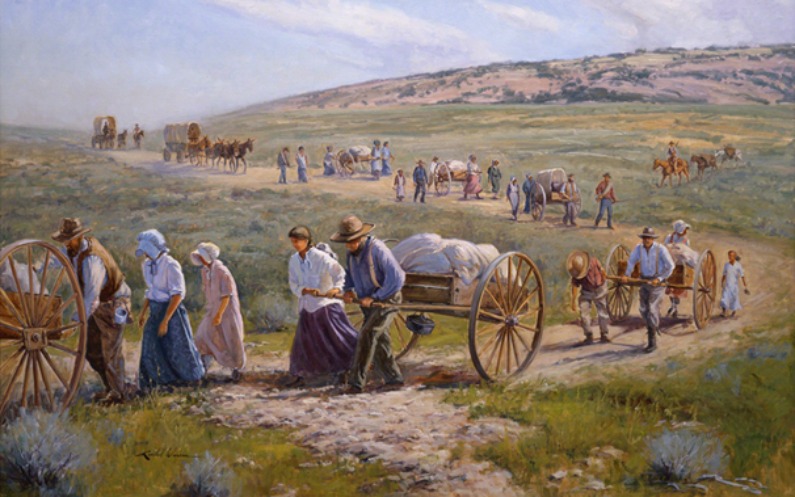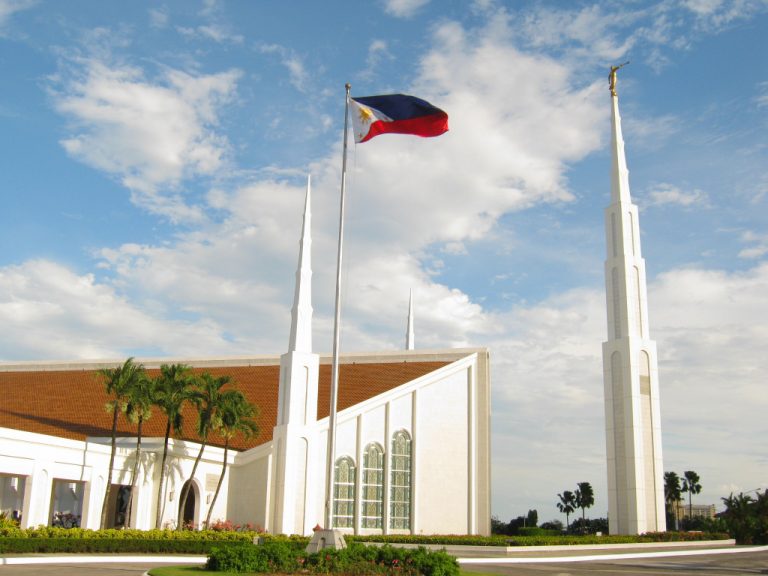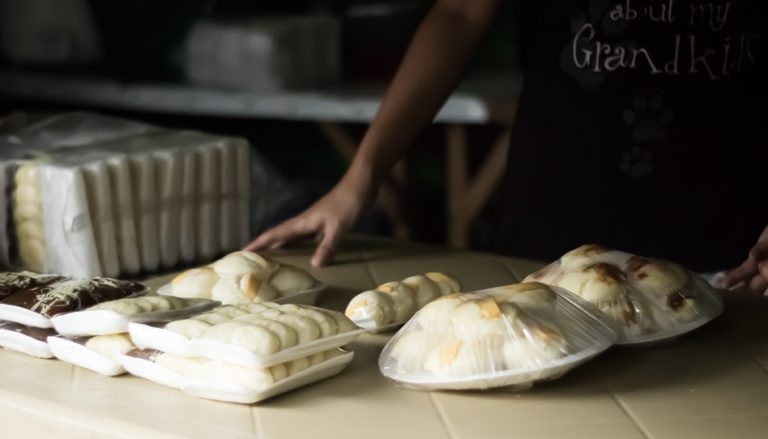The journey of the Mormon pioneers is one of the largest single migrations in American history. Those who made the journey, from the companies that arrived in November of 1847, half frozen and completely exhausted, to those who crossed oceans and left families, gave all they had, sometimes their very lives, in order to follow the Lord’s command and gather to Zion.
Throughout the 1830’s and 40’s, members of The Church of Jesus Christ of Latter-day Saints, often called “Mormons,” faced intense persecution and difficulty. Arising mostly from misunderstandings on both sides, and surrounded by a community that felt threatened by the huge influx of members of this new religion, Mormon pioneers were finally forced to leave their established city of Nauvoo, Illinois, and head west into the unknown.
Over the next few years, 70,000 Latter-day Saints made the trek across more than 1,000 miles (2,000 km) of uninhabited plains, mountains, and desert to the Salt Lake Valley. They traveled either in covered farm wagons or small handcarts barely larger than a wheelbarrow, which were filled mainly with food, farm equipment, cooking gear, and clothing, leaving very little room for personal items. They were exposed to the elements facing the very real possibilities of starvation, extreme temperatures, disease, and death. And many had to walk away from unmarked graves that held spouses or parents or children.
Initial journeys West took 17 months of travel, struggle, and suffering. But even after walking across hundreds of miles of wilderness, the fight was not over. What waited for them was not a ruggedly thriving community of gold fields, or the green new country that most pioneers went west for, but a mountain-locked desert, its biggest available water source tainted with salt and completely undrinkable. It was a land covered in brush and baked hard by the sun, that had never before been farmed or broken. To add to this, they had only a few months of farmable weather in which to grow food for the thousands of destitute saints constantly arriving. Yet out of all of the trials they faced, they held fast to their faith, and raised in the desert a community of pioneers that grew and thrived. Their efforts laid the foundation for the spread of the gospel message across the entire world.
Whether Mormons today have ancestors who crossed the plains, or are new converts to the Church, they look to the incredible example of these faithful saints, and revere those who were willing to trust their Heavenly Father, even when the promised outcome seemed an impossible feat.
Sister Bonnie D. Parkin, 14th General Relief Society President had this to say about following the example of the pioneers:
“We are all required to make journeys of faith. That is the gospel plan. Our path may not be crossing an ocean or walking alone from an empty train station. But whatever it is, it will demand faith in every footstep. Years from now your grandchildren will tell with amazement stories of your choices, which changed their lives. You will be called their pioneers. Have you ever thought that as you step into the unknown you are showing others the way? ”
The journey of the Mormon pioneers, their heartaches and their triumphs and their overarching dedication and faith can form a path to follow, guiding us ever towards the Lord in our own lives.
Note: Many of the facts listed in this article come from Wikipedia’s “Mormon Pioneers” entry.






